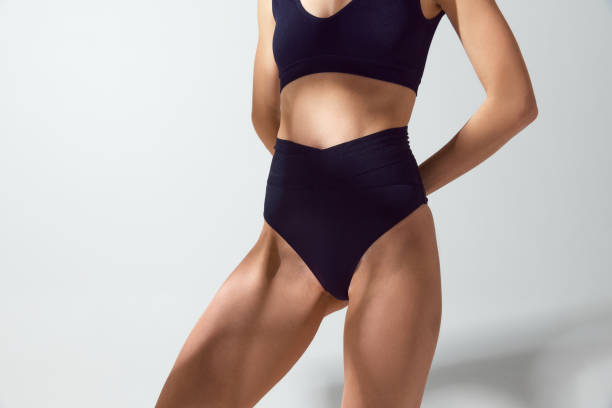Swimwear fashion has undergone significant transformation over the centuries, reflecting changing societal norms, technological advancements, and cultural influences. From ancient times to the modern day, the evolution of swimwear provides a fascinating glimpse into how fashion trends are shaped by various factors.
Ancient Swimwear: Simple and Functional

Swimwear in ancient times was both simple and functional. For instance, Greek and Roman swimmers often wore garments resembling loincloths or were sometimes nude. These early forms of swimwear were designed to offer minimal resistance in the water and to facilitate movement. While there wasn’t a significant emphasis on fashion, these pieces were practical for the purposes they served.
Interestingly, in many ancient cultures, swimming was an activity predominantly enjoyed by men. Women’s swimwear, if it existed at all, was usually more conservative and covered much of the body. This indicates gender-specific expectations and societal norms surrounding modesty. Swimwear from this era was typically made from natural fibers like linen or wool, materials readily available at the time.
The Victorian Era: Birth of Bathing Machines
During the Victorian era, swimwear took a dramatic turn towards modesty. Women wore full-length dresses made of heavy fabrics, often paired with bloomers and even corsets. Men, meanwhile, wore full-body swimsuits that covered them from the neck down to the knees. This period also saw the introduction of “bathing machines,” which allowed individuals to change out of their clothes in privacy and enter the water without being seen.
These cumbersome outfits were far from practical for swimming and were more about adhering to the moral standards of the day. The notion of public decency dictated that both men and women should be covered as much as possible. This emphasis on modesty often made swimming a quite cumbersome activity, hampered by clothing that would easily become waterlogged and heavy.
The 20th Century: Revolutionizing Swimwear
The dawn of the 20th century brought a revolution in swimwear fashion. Influenced by changes in societal attitudes and the growing popularity of leisure activities, swimwear began to evolve into much more functional and stylish pieces. The 1920s and 1930s saw the introduction of sleeker, more form-fitting swimsuits made from lighter materials such as jersey and silk.
The Bikini: A Cultural Icon
One of the most significant developments during this period was the introduction of the bikini in 1946 by French designer Louis Réard. This two-piece suit was a stark departure from the conservative styles of earlier decades and was initially met with considerable controversy. However, it quickly gained popularity and became a staple in women’s swimwear fashion.
The bikini symbolized a shift towards body positivity and freedom of expression. Over the following decades, it underwent various transformations in design, reflecting changing cultural attitudes towards women’s bodies and sexuality. High-waisted bottoms, thong bikinis, and various other styles emerged, catering to diverse preferences and fashion trends.
Modern-Day Swimwear: Function meets Fashion
Today, swimwear is a billion-dollar industry offering a vast array of choices for every body type and preference. Innovations in fabric technology have led to swimwear that is not only stylish but also functional. Modern swimwear materials often feature UV protection, chlorine resistance, and quick-drying capabilities. This makes them more durable and comfortable for both casual swimmers and professional athletes.
Additionally, inclusivity and body positivity have become essential aspects of modern swimwear fashion. Brands are increasingly offering diverse sizes and styles to cater to all shapes and sizes. Modern swimwear collections often include options like tankinis, swim dresses, and burkinis, reflecting the growing demand for both modest and stylish swimwear.
Conclusion
The evolution of swimwear fashion is a testament to the dynamic interplay between societal norms, technological advancements, and cultural influences. From the simple loincloths of ancient times to the high-tech, diverse swimwear options of today, the journey of swimwear continues to be an exciting and ever-changing one. As we look towards the future, it will be interesting to see how swimwear continues to evolve in response to new trends, technologies, and cultural shifts.
FAQs
1. When was the bikini introduced?
The bikini was introduced in 1946 by French designer Louis Réard.
2. What were bathing machines used for?
Bathing machines were used during the Victorian era for individuals, especially women, to change into their swimwear privately and enter the water without being seen.
3. What materials are modern swimwear made from?
Modern swimwear is often made from materials that feature UV protection, chlorine resistance, and quick-drying capabilities to ensure durability and comfort.
4. How has swimwear changed in terms of inclusivity?
There has been a significant shift towards inclusivity and body positivity in modern swimwear, with brands offering a wide range of sizes and styles to cater to all body types.
5. What were common materials used in ancient swimwear?
Ancient swimwear was typically made from natural fibers like linen or wool, which were readily available at the time.





